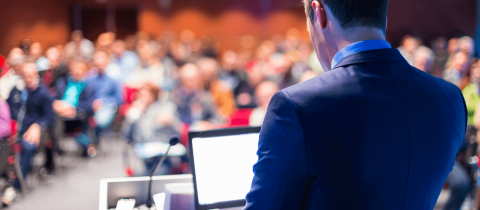What to Consider When Building an Event Website

Three years ago, we launched our annual customer conference, Acquia Engage. Since the conference was founded, I have been managing the event’s website. We’ve learned a lot in the past three years, and have made some great improvements that I thought would be valuable to share. The first year we started with a simple site, but we have gotten more advanced over time.
Where to start?
If you need an event website, what components should your site have? The main sections I always start with are:
- Homepage
- Agenda
- Registration/checkout
These are the three basic segments required to have an event website. Of course there are additional pages you can add, such as venue, contact, FAQs, speakers and session descriptions. These pages will help round out your event or conference website. However, there are many other things to consider when building your event website.
Additional Features to think about:
Like most projects, as you start to dig in, there are always lots of small things to consider. Event websites are no different. Here is my list of features to consider as your event website begins to grow:
- Coupons - Will you be provide discount coupons? How will these work? Will you have dollar off amounts or percentage off amounts? How will you ensure they can’t be applied to more than one item in the cart or used on multiple orders? Coupon codes require lots of testing and planning around the coupon logic.
- Purchase confirmation emails - These are easy to forget, but are often very helpful and important to the user. You want to make sure your confirmation email lets the user know about hotel and contact information in addition to anything else you may want to share after they have registered. These emails should also confirm how much the user spent on the ticket, what coupons were applied, and if they need to print, download or pick up any tickets. For Acquia Engage, we also link to our FAQ page. Basically, a purchase confirmation email should include any information that will be helpful to the user at the time of purchase.
- Add-ons - Will you be selling anything else besides event registration tickets? This year we started offering pre-conference workshops at an additional price. This is a nice feature for the user, but complicated our checkout process. Some questions we had to answer included: can they only purchase workshops if they are buying an event ticket? And what happens if they already purchased a ticket and then decided to buy a workshop These scenarios make the add-ons workflow harder than it seems.
- Exporting your orders - This is an essential feature for your internal events team. They need a quick and easy way to evaluate who is coming, how many tickets have been sold and how much money has been collected. It’s important to have a simple way to export all of your orders and view what has been purchased.
- Referral source tracking - The first year we hosted our event, we were just excited to have registrations and didn’t care much about where they came from. The following year we really needed to start digging in on what marketing efforts made the most impact on our registrations. So, we added in referral source tracking into our registration process. Based on URL parameters, we set a cookie on our website that gets stored during the checkout process. This tells us what marketing campaign drove the registration so that we can evaluate, which efforts paid off and which ones we won’t consider doing next year.
- Post event site updates - What does your site look like after your event? Do you want to share photos of the event? Do you need to tell your attendees what to expect next year? This aspect of event websites is easy to overlook. We prepare a homepage update that says thanks for coming and we look forward to seeing you next year. We also include a fun slideshow that recaps the event. This gives the users an update of what's happening next year and a chance to find their own photos in our slideshow. I would recommend planning any post event site updates ahead of time, as things can often be chaotic once your event is underway.
- Posting sessions - Now that your conference is over, will you post and share your session presentations? Depending on a speaker approvals, we’ll either post session slides or recordings. In addition to ensuring that you have the proper approvals, site users will need to be able to find these sessions. We actually flip our agenda page into a presentation page and attach slides and recordings directly to the agenda items. Not only does this his make it easy for the users to find, but it’s great to pair the original description pages with the full sessions.
Every year I find ways to make this process work a bit better for us, and I hope that if you are launching your first event website that you can use some of these tips to get started. I know that when we first launched our Acquia Engage conference site, I was looking for an article like this to make sure I wasn't forgetting anything. Leave a comment if you think I’ve missed anything, and I can work to update this post.